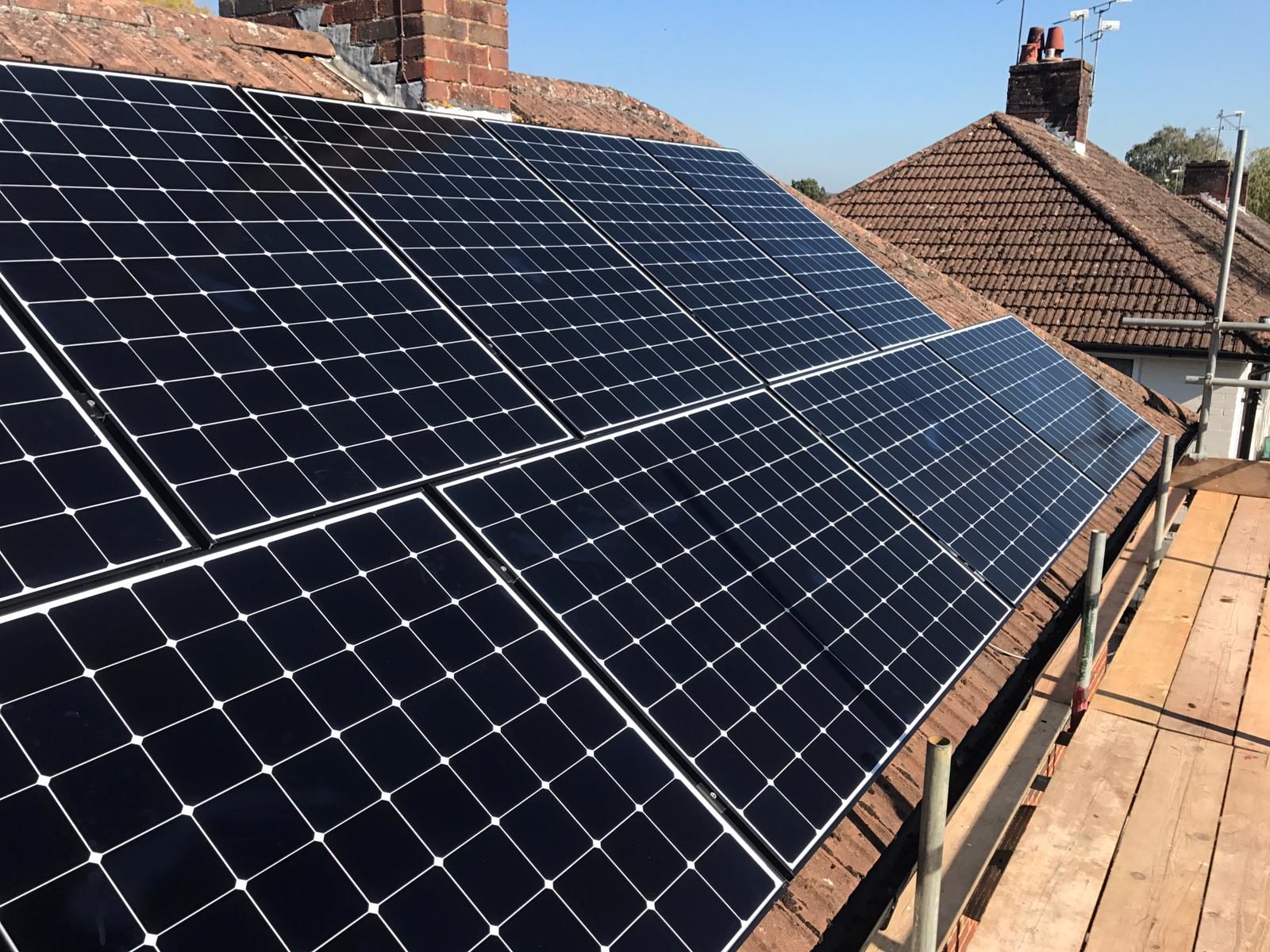Have you ever wondered why solar panels are black?
This blog post explains why some solar panels are black and some are blue, and the difference between the two.
Black solar panels are monocrystalline solar panels, and are created from the highest quality silicon. A material that is relatively cheap to produce and efficient at generating an electrical charge.
Manufactured using the Czochralski method, monocrystalline panels are created from silicon wafers all oriented and aligned in one direction, giving that slick black effect.
If the aesthetics of your solar panels are important to you then sleek monocrystalline panels will definitely suit your look.
Multi Crystals
Polycrystalline panels don’t bother with the perfect alignment of the silicon crystals. Instead, they’re formed of multicrystalline wafers that help to give the panels their characteristic blue look.
It’s likely that you’ve seen these twinkling blue panels in use, as they account for around 90% of solar panels on the market today.
Energy Efficiency
But the difference between monocrystalline and polycrystalline solar panels is more than skin deep. The way they’re manufactured also has a fundamental effect on the way each panel operates.
The single crystal cells of a monocrystalline panel allow the electricity-generating electrons room to move freely across the cell.
By contrast, in a polycrystalline panel where each cell is made up of multiple crystals, the electrons move far less freely. That means the standard polycrystalline cell is far less efficient at generating electricity.
Paint It Black
So why should you choose monocrystalline solar panels for your home energy installation?
Apart from the superior aesthetics of the all black panels, they’re more energy efficient than their polycrystalline counterparts.
And because they yield higher energy outputs, they’re naturally more space efficient.
The superior grade of silicon also makes them harder wearing than polycrystalline panels, and they’re generally supplied with a 25-year guarantee.
True Blue
So why have polycrystalline panels become the dominant solar technology?
The method used to produce the silicon wafers used in monocrystalline panels is far more costly because a significant amount of silicon ends up as waste.
The process involved in creating polycrystalline cells, on the other hand, is far less resource intensive and much more cost-effective. Polycrystalline technology makes solar a much more affordable technology for the average household.
New technologies are also producing polycrystalline panels that are fast closing the efficiency gap on their more expensive rivals. However, the black panels still retain the edge when it comes to generating electricity for your home.
Black vs Blue – what’s best for you?
Both types of panels have their unique advantages and drawbacks. If you’re going off the grid to reduce your energy bills, then you may opt for a cheaper polycrystalline system and miss out on monocrystalline’s superior efficiency.
In the end, your decision will come down to budget, space constraints and your personal aesthetics.
If you’re on a tight budget, then invest in the best polycrystalline system you can afford. If energy efficiency is your objective, invest in more efficient monocrystalline solar with a battery array to store your excess energy.
Is space an issue? If so, you’ll find that monocrystalline panels are far more space efficient. Ultimately, however, it may just come down to personal preference and whether you prefer the sleek and streamlined aesthetic of those smart black panels which give a stylish edge to your roofline.
